

/en/access/sorting-and-filtering-records/content/
The real power of a relational database lies in its ability to quickly retrieve and analyze your data by running a query. Queries allow you to pull information from one or more tables based on a set of search conditions you define. In this lesson, you will learn how to create a simple one-table query.
Watch the video below to learn more about designing a simple query in Access.
Queries are a way of searching for and compiling data from one or more tables. Running a query is like asking a detailed question of your database. When you build a query in Access, you are defining specific search conditions to find exactly the data you want.
Queries are far more powerful than the simple searches or filters you might use to find data within a table. This is because queries can draw their information from multiple tables. For example, while you could use a search in the Customers table to find the name of one customer at your business or a filter on the Orders table to view only orders placed within the past week, neither would let you view both customers and orders at once. However, you could easily run a query to find the name and phone number of every customer who's made a purchase within the past week. A well-designed query can give information you might not be able to find out just by examining the data in your tables.
When you run a query, the results are presented to you in a table, but when you design one you use a different view. This is called Query Design view, and it lets you see how your query is put together.
Click the buttons in the interactive below to learn how to navigate Query Design view.
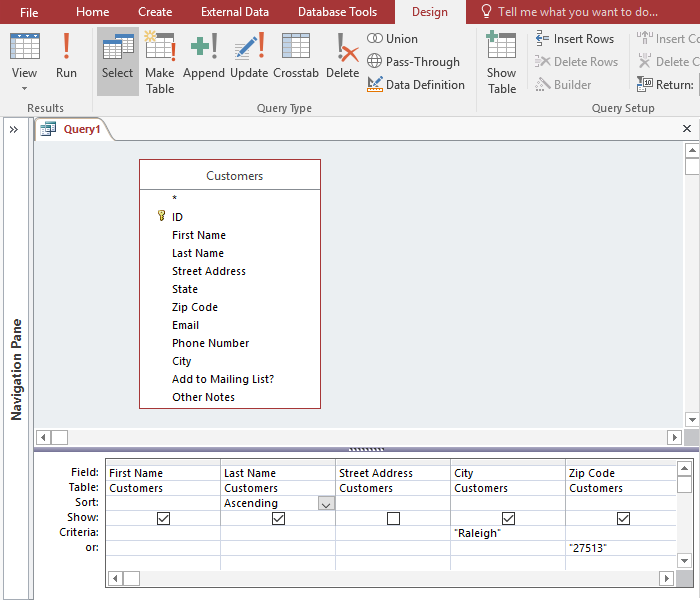
Let's familiarize ourselves with the query-building process by building the simplest query possible: a one-table query.
We will run a query on the Customers table of our bakery database. Let's say our bakery is having a special event, and we want to invite our customers who live nearby because they are the most likely to come. This means we need to see a list of all customers who live close by, and only those customers.
We want to find our customers who live in the city of Raleigh, so we'll search for "Raleigh" in the City field. Some customers who live in the suburbs live fairly close by, and we'd like to invite them as well. We'll add their zip code, 27513, as another criteria.
If you think this sounds a little like applying a filter, you're right. A one-table query is actually just an advanced filter applied to a table.

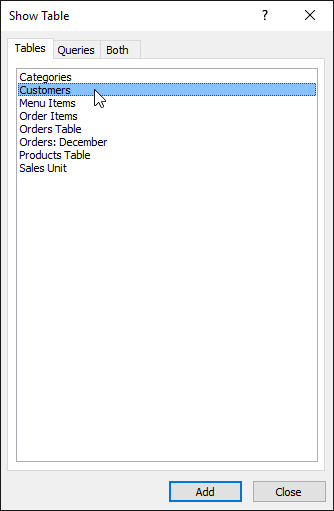
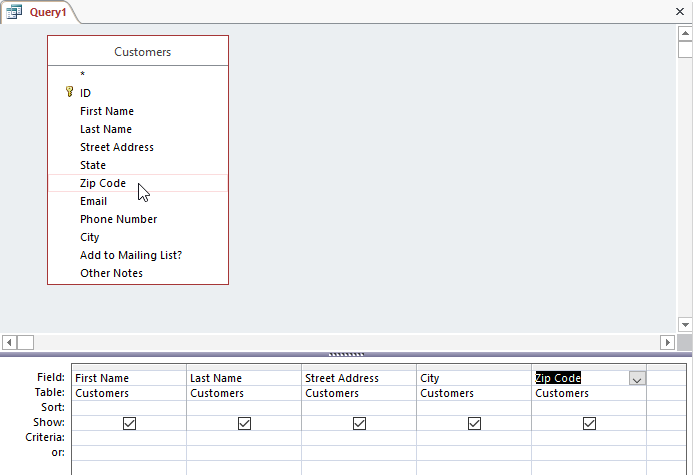
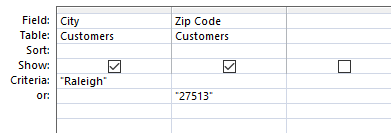

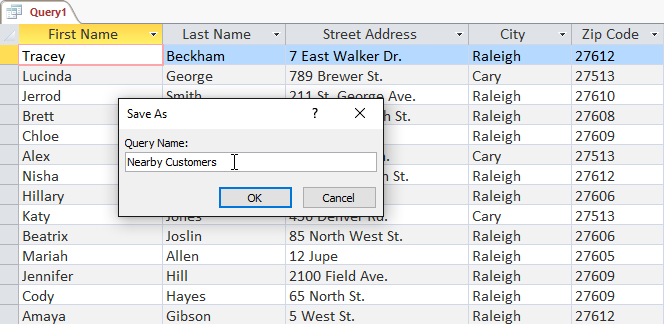
Now you know how to create the simplest type of query with only one table. In the next lesson, you'll learn how to create a query that uses multiple tables.
/en/access/designing-a-multitable-query/content/